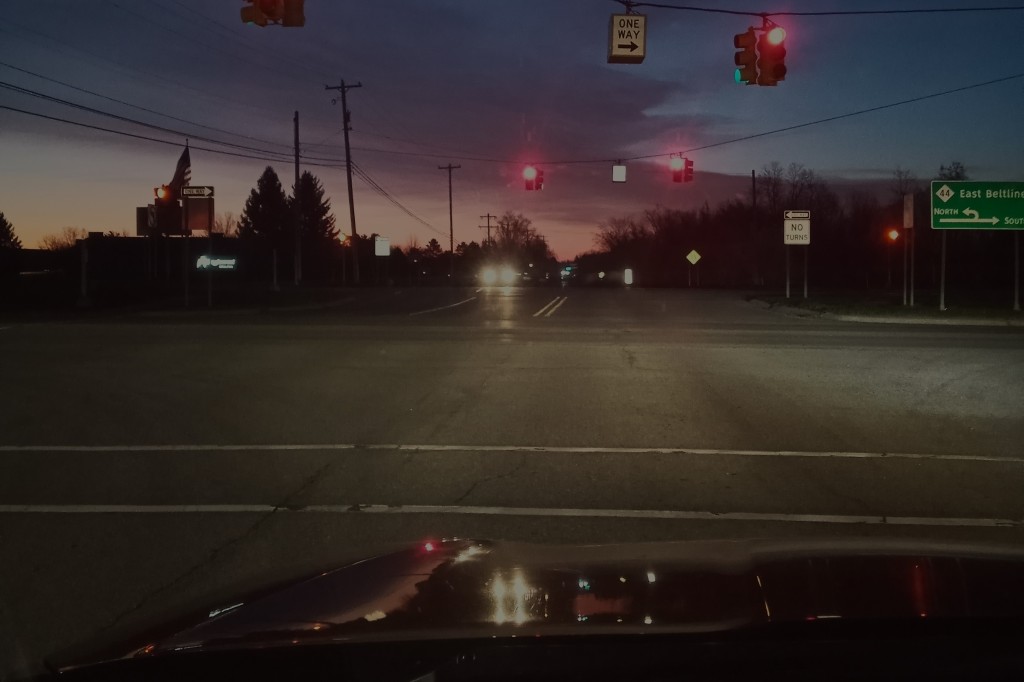
In his book, Camera Lucida (1981), Roland Barthes (1915-80) distinguishes between what the photographer (the operator) sees, what the camera sees (lens, film, chemical processing), and what the viewer sees. On this early morning drive, stopped at this intersection, two things came to mind. One is the way that the camera’s record of the light (objective vision) differs to what a person sees at the moment (subjective vision). That observation is a separate blog article. The other thing that comes to mind is the many layers of meaning in the scene in the distinctions that Barthes points out. But in addition to his three facets, there are still more. First is the dawn scene itself, regardless of there being any admiring humans or other creatures that notice it. Second is my attention being drawn to it; something about the light, lines, colors and so on makes me recognize wonder or beauty somewhere in the surroundings of those fleeting minutes. Third is my desire to make a photo to ratify this beauty and to share it with others. Fourth is what the camera sees –a skillful photographer could translate the human emotional responses or meanings of the moment into terms that a lens can “write with light.” Fifth is the result of the camera work that then is seen by the viewers of the two-dimensional representation of the fast-changing light of dawn’s early light. Sixth is what the photographer sees secondarily; not by direct vision at the time of recording the scene but now sandwiching those memories with the subsequent experience of handling the printed (color) picture. Seventh is what other viewers see who are removed in time or geography from the original subject and time; for example, people seeing the photo a generation after it was made, or people from a faraway language and culture. Since these latter-day viewers may lack the context to know or appreciate what they are seeing, the viewing experience may differ considerably from what people see who are connected more closely to the place or event.
Layers of meaning pertain not only to pictures made by camera, but also in other life experiences. The story of Macbeth with tellings of events through the eyes of different characters, or the Japanese interpretation in the Kurosawa film, Rashomon, whence the “rashomon effect” of multiple versions of events according to each character’s point of view. The above photo has the seven (or more) lives described above, but that could be said of displays encountered in a museum, advertisements presented in print or on TV, appliances or automobiles (concept, design, production, reviewer, promoter, buyer new and subsequent buyer used, mechanic’s point of view, insurance adjuster point of view, and so on). So while a photo has many lives, so do most parts of one’s experience going through life.

